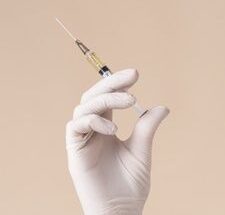The World Health Organization (WHO) has endorsed a cost-effective and widely producible malaria vaccine created by the University of Oxford. This announcement marks a significant milestone in combatting the life-threatening disease, which is transmitted to humans by certain mosquitoes. Malaria is a pressing global health concern, particularly affecting infants and young children, and has posed a formidable challenge for over a century. Encouragingly, agreements are already in place to manufacture more than 100 million doses of the newly recommended vaccine, known as R21.
Malaria, caused by a complex parasite transmitted through the bites of infected mosquitoes, presents a unique challenge due to its ability to shape-shift within the human body. This characteristic makes it difficult for the immune system to naturally build immunity and for scientists to develop effective vaccines. Nearly two years ago, the WHO lent its support to the first malaria vaccine, RTS, S, developed by GSK. Now, with the addition of R21, the fight against malaria has gained another powerful tool.
Dr. Tedros Adhanom Ghebreyesus, Director-General of the WHO, expressed his enthusiasm for this breakthrough, stating, “I used to dream of the day we would have a safe and effective vaccine against malaria, now we have two.” Both vaccines are deemed highly effective, with the crucial distinction lying in the University of Oxford’s capacity to mass-produce R21. The Serum Institute of India, the world’s largest vaccine manufacturer, has ambitious plans to produce over 100 million doses annually, with aspirations to further increase production to 200 million. This is a significant step, especially considering the limited availability of the RTS, S vaccine, with only 18 million doses currently accessible.
The new R21 vaccine is positioned as a vital additional tool in the fight against malaria, particularly in regions where the disease is endemic. Notably, each R21 dose costs between $2 and $4, and four doses are required per person, making it approximately half the price of RTS, S. While both vaccines employ similar technologies and target the same stage of the parasite’s lifecycle, R21 stands out for its ease of manufacturing, thanks to its smaller dose and simpler adjuvant.
In 2021, the world witnessed 247 million cases of malaria, resulting in the tragic loss of 619,000 lives, with a significant majority being children under the age of five. Over 95% of malaria cases are concentrated in Africa. Discussing the potential impact of R21, Dr. Matshidiso Moeti, the WHO Regional Director for Africa, stated, “This second vaccine holds real potential to close the huge demand-and-supply gap. Delivered to scale and rolled out widely, the two vaccines can help bolster malaria prevention and control efforts, and save hundreds of thousands of young lives.”
Despite not undergoing the standard scientific review process, the R21 vaccine has demonstrated impressive effectiveness, with data published online indicating a 75% efficacy in preventing malaria in areas with seasonal transmission. The WHO’s Strategic Advisory Group of Experts acknowledges that the vaccine’s efficacy may be somewhat lower in regions where the parasite is present year-round, a scenario reminiscent of the first vaccine’s performance in seasonal areas.
Professor Sir Adrian Hill, Director of the Jenner Institute in Oxford, the birthplace of R21, highlighted the vaccine’s practicality and affordability. He stated, “The vaccine is easily deployable, cost-effective, and ready for distribution in areas where it is needed most, with the potential to save hundreds of thousands of lives each year.”
This development underscores the global commitment to eradicating malaria, a disease that has persisted for far too long. With the WHO’s endorsement of R21, coupled with the production capacity of the Serum Institute of India, the dream of a malaria-free world draws closer to becoming a reality.


